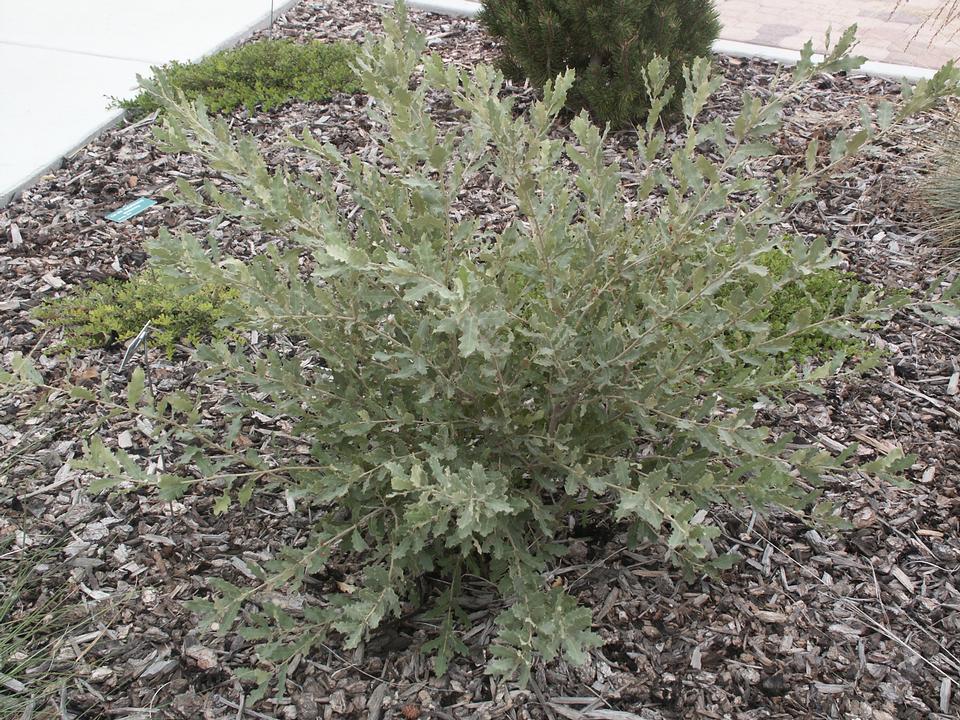Oak, Wavyleaf
Quercus undulata
Fagaceae - Beech and Oak
Description
Leaves: Dark blue-green above, dull green beneath; hairy above and beneath, less hairy with age; simple; alternate; oblong to elliptical, margins undulate and lobed to toothed; 3/4" to 2-1/2" in length, 1/3" to 1-1/3" in width; an evergreen to deciduous broadleaf (retains its leaves for more than one year).
Twigs/buds: Twigs green when young, nearly covered with tan-colored hairs; turning brownish when older. Buds small, scaly, hairy.
Flowers/fruit: Monoecious; flowers in catkins; 4-8 sepals and no petals; pollinated by wind, blooming in April to May. Fruit a small acorn, 1/3 covered by scaly cup; 1 seed per nut; ripe in late summer (August to September).
Bark: Gray, rough.
Wood: Little information available.
General: Native to southern Utah, Colorado, New Mexico, Arizona, Oklahoma, and northern Mexico. Its native habitat is rocky slopes and mesas. A small, shrubby evergreen or sometimes deciduous broadleaf (i.e. it retains leaves for more than one year). Called Quercus havardii or shinnery oak by Welsh et al. and is probably a hybrid of Q. gambelii and Q. turbinella.
Landscape Use: Doing well in West Jordan. Has slightly crinkled or wavy leaves. Zones 7(6?)-9.
Characteristics
General
| Family | Fagaceae - Beech and Oak |
|---|---|
| Cultivar Availability | No |
| Hardiness Zone | 7-9 |
| Type | Broadleaf |
| Utah Native | Yes |
Growth
| Growth Rate | Low |
|---|---|
| Mature Height | Low |
| Longevity | Medium |
| Is Good Under Power Lines | Yes |
| Crown Shapes | Shrubby |
Ornamental
| Bark | No |
|---|---|
| Fall Color | No |
| Flowers | No |
| Foliage | Yes |
| Fruit | No |
Tolerance
| Shade | Medium |
|---|---|
| Salt | Medium |
| Drought | High |
| Poor Drainage | Medium |
| Alkalinity | High |
| Transplanting | Medium |




